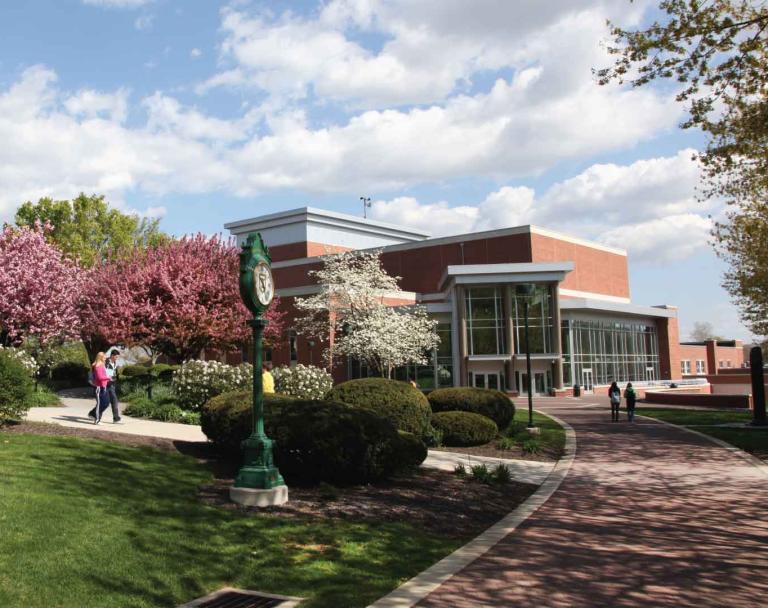Josh Sims

York College Civil Engineering Major’s Capstone Brings Shade, Water to Apache Tribe
Designing for a real client, Josh Sims ’21 followed his capstone project out of the classroom and into the mountains of Arizona.
It was an “aha” moment. The ramada—a structure with open sides and a roof—designed by Josh Sims ’21 and his team of fellow York College of Pennsylvania Civil Engineering students, was supposed to be relatively easy to build. They made sure all the lumber and parts needed could be found at any Home Depot or Lowes.
It wasn’t until Sims saw the land where the ramada would be built and met the people who would be using it that he understood the miscalculation his team had made. Their clients, members of the White Mountain Apache Tribe, needed access to local materials, rather than visiting larger hardware stores.
Equipped with this crucial information, his team updated its design for round timber instead of flat wood. It was the kind of real-world experience you only get from working with real clients. And it’s just one of the reasons Sims jumped at the opportunity to spend his last college break traveling from Pennsylvania to Arizona to meet the clients of his team’s capstone project in person.
Low-tech, high impact
Capstone projects for Civil Engineering students are common, but capstone projects with real clients are more unusual.
“The students are definitely more motivated because they’re working for real clients,” says York College Civil Engineering Associate Professor Paul Ackerman, Jr. “It’s not busy work. These clients are going to use this research, data, and design for their needs.”
Two of last year’s capstones came from the Highland Support Project that supports Indigenous people to live on their land, in their community, and with their culture. They reached out to Ackerman, who’d worked with them previously, about two low-technology but high-impact projects.
Virtual meetings connected the York College seniors with their clients in Arizona. “We realized just how much of an impact something like this would have on the local community and how important it was to get it right,” says Sims.
Seizing an opportunity
It was only a remote possibility at first. But, when the timing of a group of volunteers heading to the White Mountain Apache Tribe Reservation lined up with the last break in his senior year at York College, Sims jumped at the opportunity to travel with his professor to learn more about the people and place his project was designed for.
Stepping off the plane in Arizona in June, Sims and Ackerman ran smack into a wall of 114-degree heat. It was cooler in the mountains on the reservations, but the experience really drove home the importance of the ramada. It was intended to provide shade for workers of a community garden and collect rainwater.
“You can pull a lot of stuff from the internet,” Ackerman says, “but there’s nothing like being able to walk the site.”
Their time was spent doing the prep work for the two capstone projects—clearing brush from an old canal, surveying the land, and removing the old ramada and its collapsed roof. It was hard, but rewarding work.
“It was nice to be able to help people,” Sims says. “You learn more about their culture and how they live if you’re helping them rather than as a tourist just passing by.”
More than a homework assignment
Sims says the trip to Arizona was invaluable. He brought all kinds of information to his team, and they were able to design plans that incorporated aspects of the White Mountain Apache Tribe’s historic ramada design with their own.
The result was something that will benefit the people on the reservation for years to come—and something Sims and his team could be proud of. “This isn’t just homework,” Sims says. “This is going to be real.”

